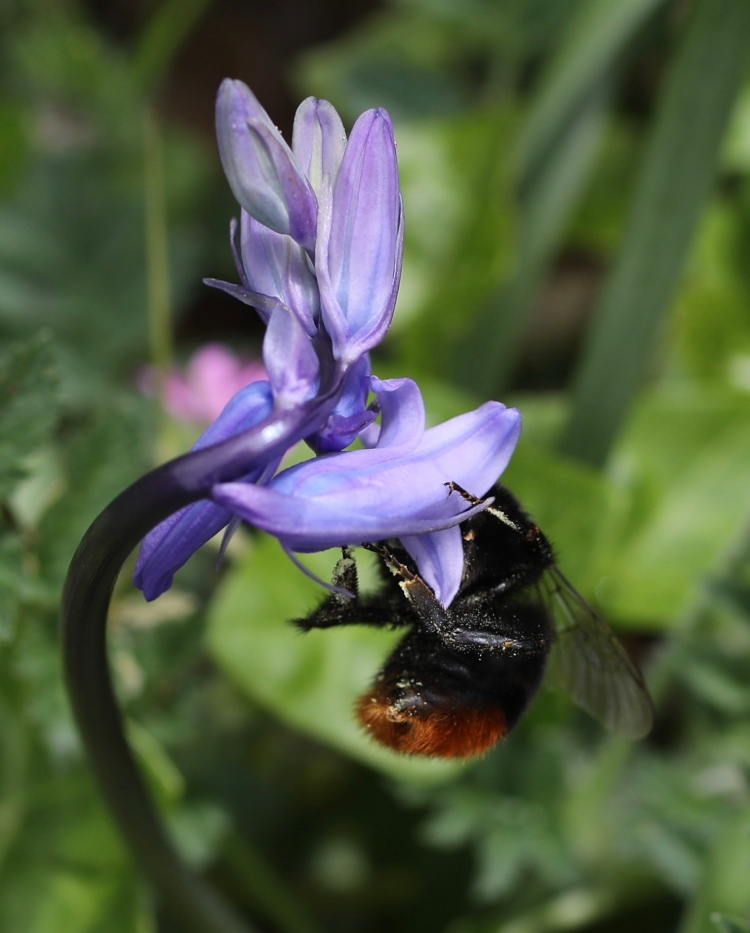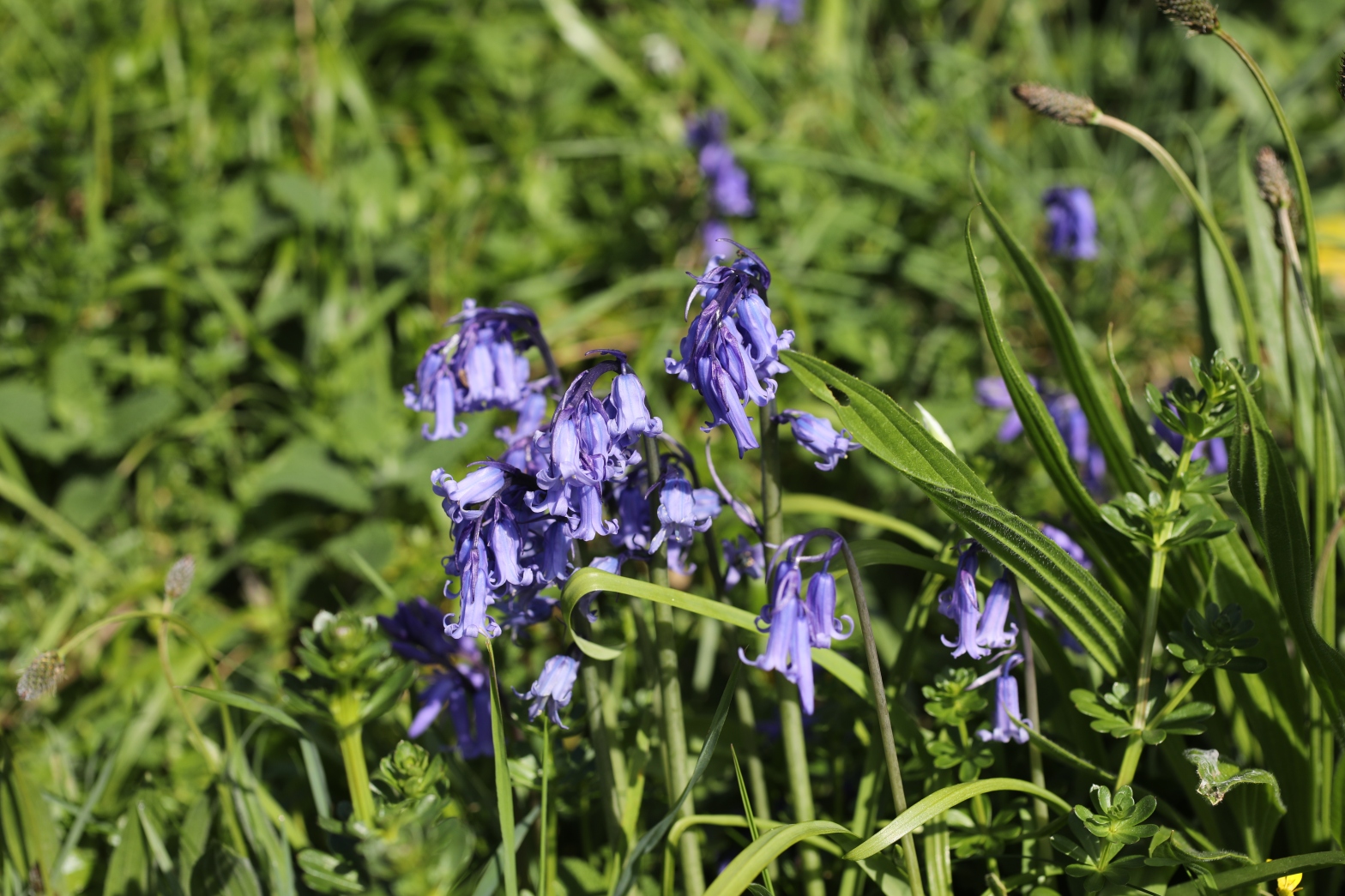
Bluebells, Hyacynthoides non-scripta, are native and grow well in Guernsey. Best of all are Bluebell Woods on the east coast between St Peter Port and Fermain Bay, particularly when early morning sunshine slants through the peaceful wooded slopes above Soldiers Bay.
More surprisingly, Bluebells grow well along the cliff paths and on open ground well away from any woodland which is not a common habitat in the island. Pleinmont Headland has a field near the TV mast that is a sea of blue in spring. Probably, this is a remnant from Guernsey’s distant past when trees covered more of the island. On low tides at Rousse and Vazon, particularly after stormy weather, peat and tree stumps are uncovered. This is all that remains of ancient forest, thousands of years old. Another clue to the island’s more wooded past is the name of the Forest Parish, one of ten island parishes. Today, most woodland is restricted to south-facing or east-facing valleys that run down to the sea such as Petit Bôt and Fermain with other wooded areas in the higher parishes of Torteval, St Pierre du Bois, St Saviour and the Forest.

English Bluebells are a native plant and help to support the island’s biodiversity. More elegant than the introduced Spanish Bluebells, they have slender stems and the bells at the top hang down, like a bishop’s crozier. Spanish Bluebells are very vigorous and will hybridise with the native plants, threatening the true native stock. English Bluebells are also being pushed out by Three-cornered Leek (Stinking Onions), Allium triquetrum, another introduced species which spreads rapidly and in April is seen along most lanes with an earth bank. I have both English and Spanish Bluebells in my garden, despite its light, sandy soil. This year I will be busy digging out the non-native plants – not an easy job as the bulbs settle deep in the soil.
